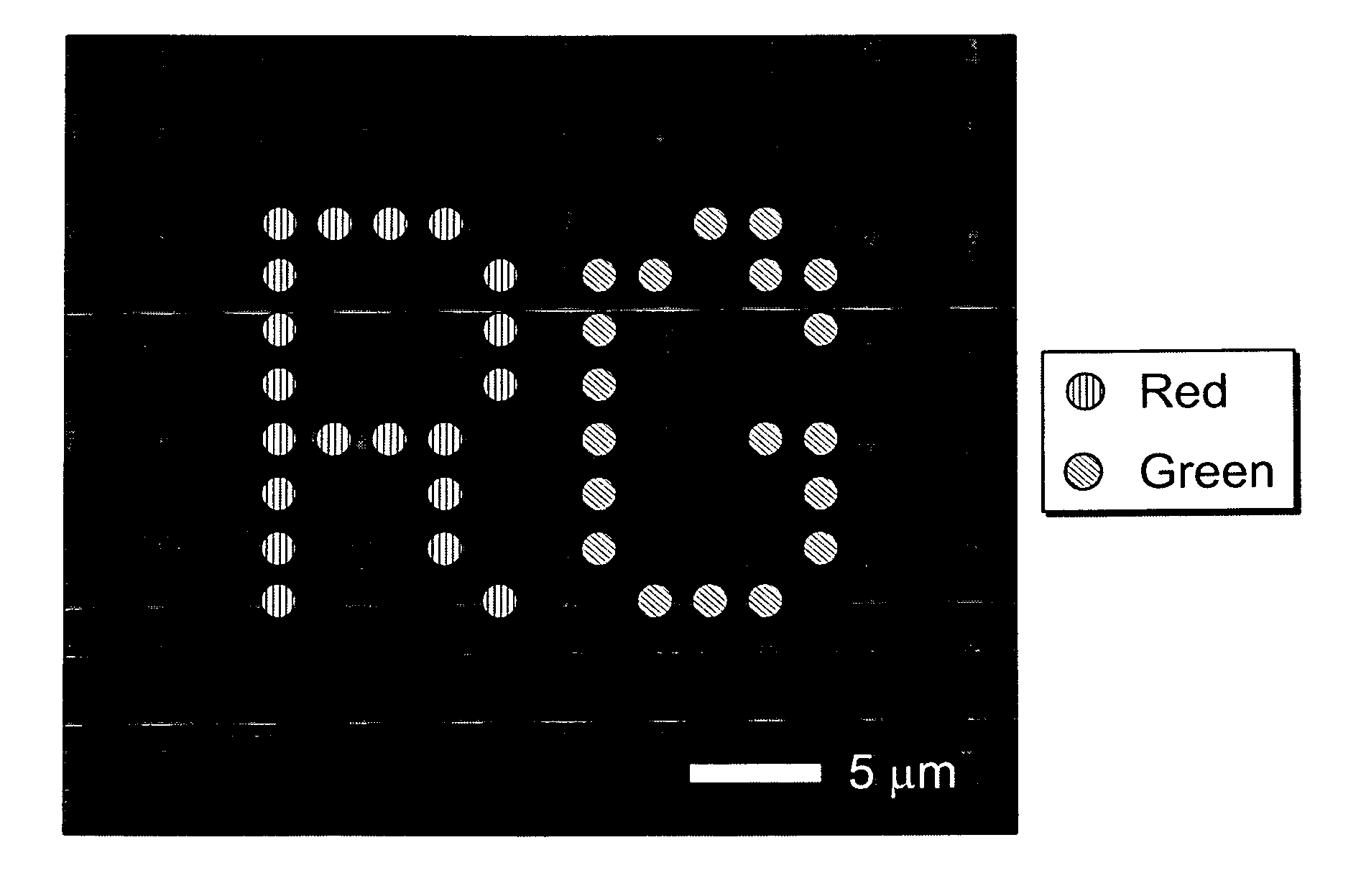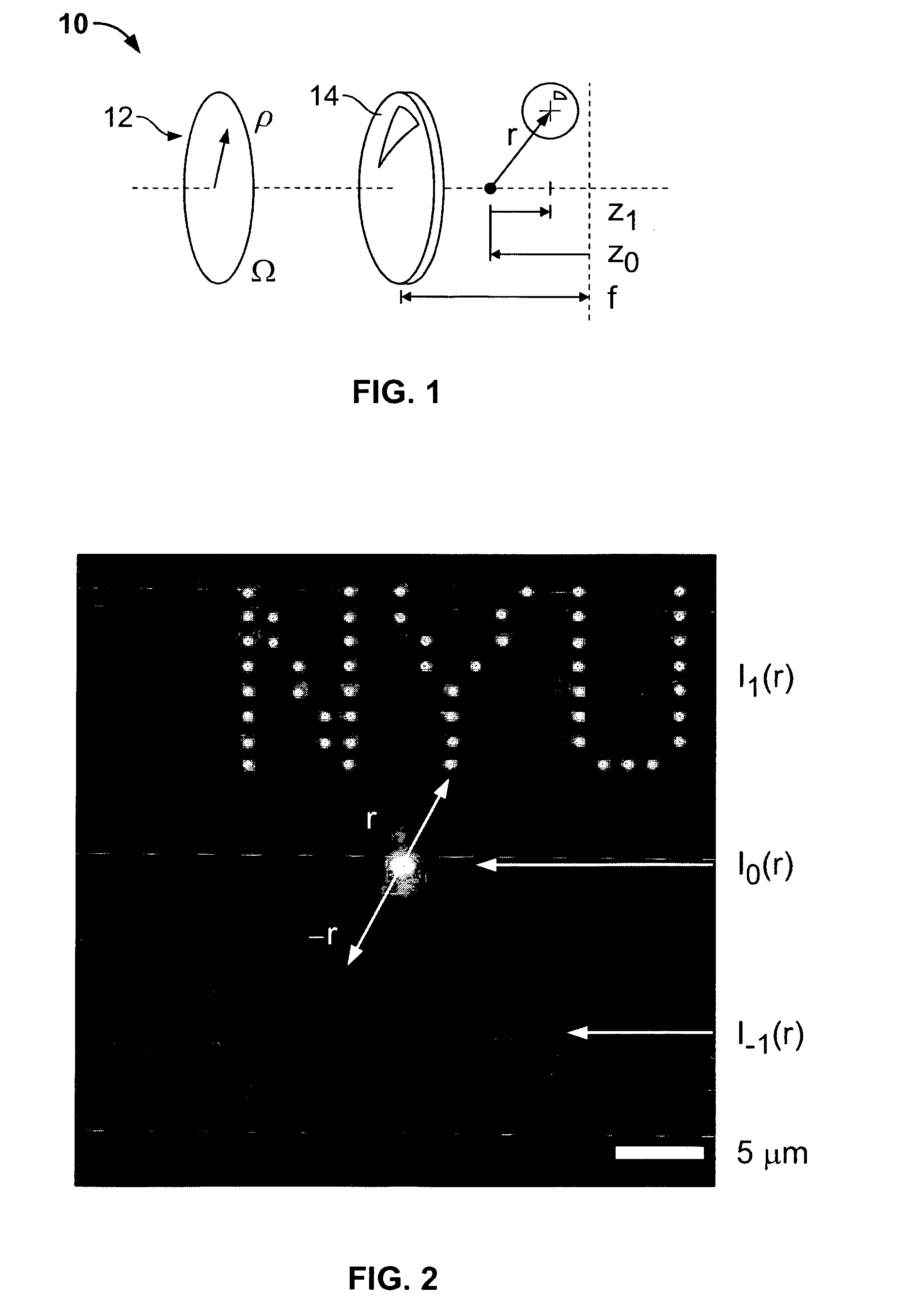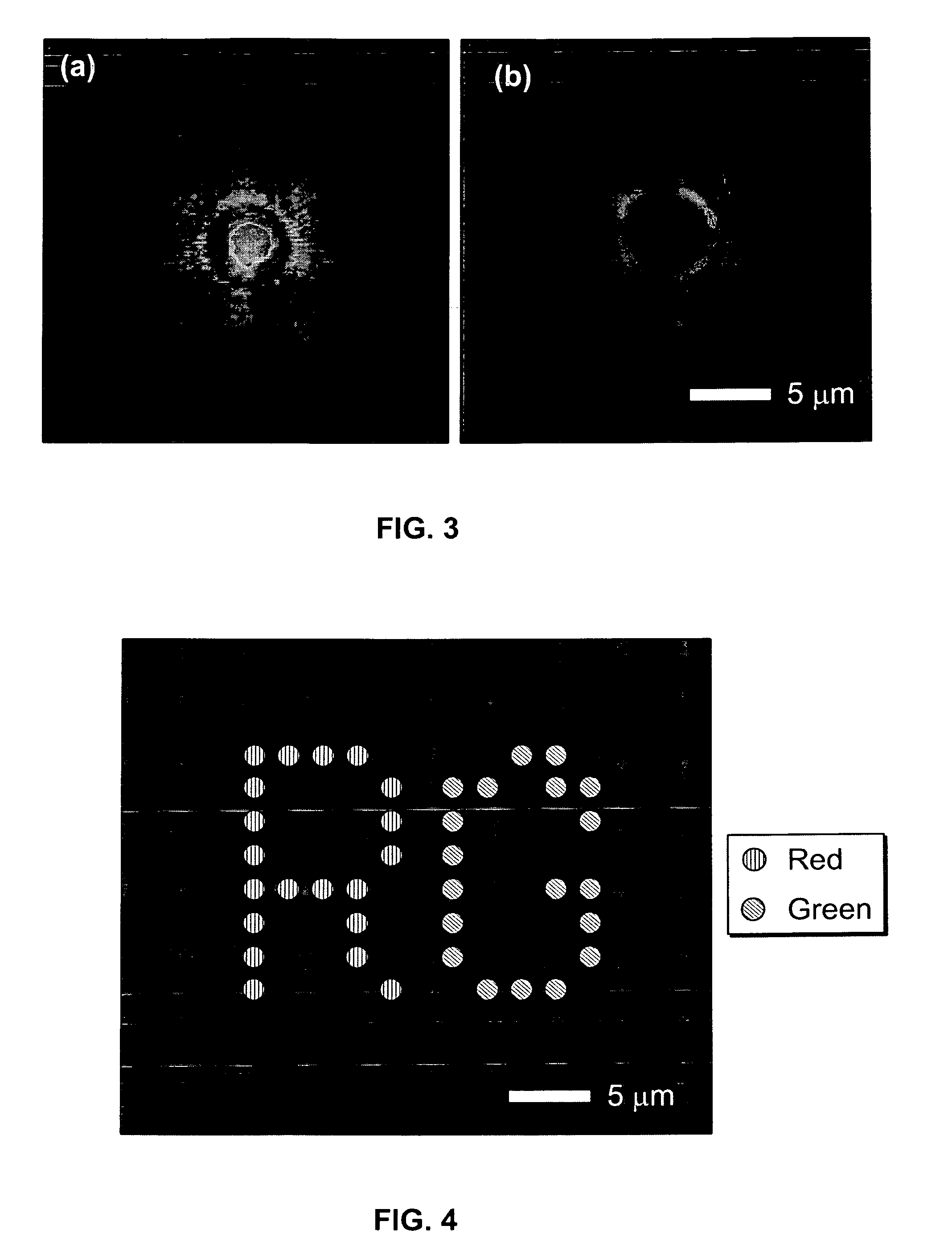Multi-color holographic optical traps
a multi-functional, optical trap technology, applied in the field of three-dimensional patterns of multi-functional optical traps, can solve the problems of reducing the overall intensities, never providing precisely the phase pattern, and offering continuously varying phase profiles
- Summary
- Abstract
- Description
- Claims
- Application Information
AI Technical Summary
Benefits of technology
Problems solved by technology
Method used
Image
Examples
Embodiment Construction
[0011]As shown in FIG. 1, a well known holographic optical trapping system 10 is powered by a collimated laser beam (not shown), which is relayed to the input pupil 12 of a high-numerical-aperture lens such as a microscope objective lens 14. This objective lens 14 focuses the laser beam to a diffraction-limited spot at a location determined by the beam's angle of incidence and degree of collimation at the lens' input pupil. Such a focused spot acts as a single-beam optical gradient force trap known as an optical trap or optical tweezer, which is capable of capturing and holding mesoscopic objects in three dimensions. Placing a wavefront-shaping hologram in a plane conjugate to the input pupil transforms the single optical tweezer into a pattern of holographic optical traps whose number, three-dimensional configuration, relative and absolute intensities, and mode structure all are encoded in the hologram. Deficiencies in the hologram's implementation might reasonably be expected to d...
PUM
 Login to View More
Login to View More Abstract
Description
Claims
Application Information
 Login to View More
Login to View More - R&D
- Intellectual Property
- Life Sciences
- Materials
- Tech Scout
- Unparalleled Data Quality
- Higher Quality Content
- 60% Fewer Hallucinations
Browse by: Latest US Patents, China's latest patents, Technical Efficacy Thesaurus, Application Domain, Technology Topic, Popular Technical Reports.
© 2025 PatSnap. All rights reserved.Legal|Privacy policy|Modern Slavery Act Transparency Statement|Sitemap|About US| Contact US: help@patsnap.com



